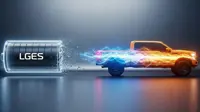US Army roots for Future Combat Systems technologies
03 Oct 2007
Washington: US Army Chief of Staff, Gen. George W. Casey Jr and Secretary of the Army, Pete Geren, introduced equipment, incorporating technologies developed under the Future Combat Systems (FCS) programme, and currently being used in Iraq, to members of the US Congress House Armed Services Committee. They were speaking to the committee late last month about the need to reset and modernize the Army in order to improve its overall readiness.
"We are ultimately working toward an agile, globally responsive Army that is enhanced by modern networks, surveillance sensors, precision weapons and platforms that are lighter, less logistics-dependent and less manpower-intensive," Gen. Casey said.
While major new FCS systems are not due for induction until 2012 along with the new FCS Brigade Combat Teams, Gen. Casey introduced a number of new technologies "spun out" of the ongoing research into such systems that are already seeing active service with US Army units in Iraq and Afghanistan.
Gen Casey introduced the Micro Air Vehicle or MAV unmanned aerial vehicle, of which 50 are currently in Iraq with the 25th Infantry Division (Light). Nicknamed as the "beer keg UAV" or the "scrubbing bubble" because of its appearance, Gen Casey said. "It's a squad or platoon-level unmanned vehicle that you can run down an alley, look around a corner or look on a roof and see what's up there."
Gen Casey also introduced the lawmakers to a Small Unmanned Ground Vehicle or robot that has already defused about 11,000 improvised explosive devices in the ongoing operations in Iraq and Afghanistan. Close to 5,000 of these robots have been currently inducted for operations. Gen Casey said. "Sending a robot up to defuse an IED is much safer than having a Soldier do it."
Gen Casey also introduced the Unattended Ground Sensor currently being used in Iraq to detect enemy activity. "These are critical for us," Gen. Casey said. "A soldier can take this and put it in a building or along a road and watch it back at his base."
Gen Casey also introduced several variants of the Joint Tactical Radio System (JTRS), including a man-pack version that can be carried in a rucksack and a larger Ground Mobile Radio with multiple units designed for vehicles. The JTRS will use new wave forms and be tied into a wide-band network of surveillance systems, which are intended to bring unprecedented situational visibility to the battlefield.
Also introduced were Rapid Fielding Initiative (RFI) items such as the Advanced Combat Helmet and RFI clothing being issued to troops deploying to Iraq and Afghanistan. The US Congress committee members were also given a demonstration of the rapid-release feature of the new, lighter Interceptor Body Armour. The feature can be used in such emergencies as a vehicle rollover, fire or when a soldier faces potential drowning and is part of the second generation of individual body armour that the US Army has begun to field.






.webp)















